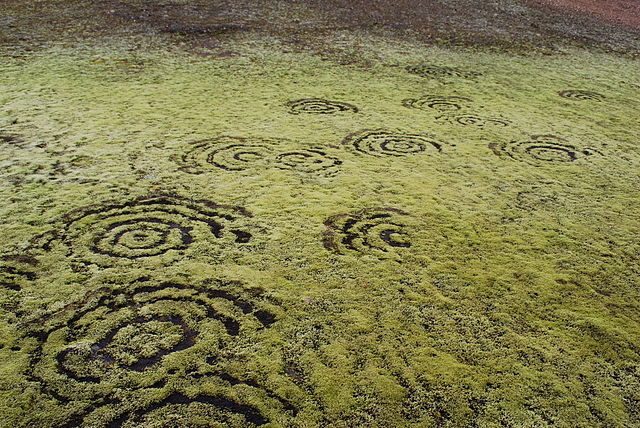Tags
I always love when I find stories that not only teach me new Icelandic words, but also something new in general. I had never heard of these “Witches’ Rings” as I translated it from Icelandic. They apparently have many names in English, like Fairy Ring/Circle, Elf Ring/Circle or Pixie Ring. It also turned into a mini botany lesson, specifically centered on mushrooms 🙂
The article that first caught my attention was this one from RÚV. It contained pictures as well as a link to a page on Vísindavefurinn, a very cool site which has featured in previous posts, which explained how these rings form. I took the first paragraph from this to translate, and if you click through to the RÚV article the first paragraph of that is very similar, and the rest of the article not too tough. It talks about how a farmer took the pictures while on a sheep round-up, and thought it might have been caused by the sulfur pollution from Holahraun.

This excerpt is from the article on Vísindavefurinn which answers the question: Hvernig myndast nornabaugar eða nornahringir í mosa?:
Svokallaðir nornabaugar eða sveppabaugar verða til vegna áhrifa frá þráðum svepps sem liggur í jarðvegi undir mosanum og verður til þess að mosinn yfir sveppnum vex illa eða jafnvel drepst. Þá sést hringur af dauðum eða veikluðum mosa í mosabreiðunni. Á baugnum eða við hann ber sveppurinn síðan aldin sín og eru þau eini hluti sveppsins sem er sýnilegur. Hins vegar sjást þau oftast aðeins í stuttan tíma og baugurinn því oftar en ekki aldinlaus. Því getur verið erfitt að gera sér grein fyrir um hvaða svepp er að ræða.
So-called witches’ rings or mushroom rings form due to the influence from mushroom hyphae which lie in the soil under the moss, and cause the moss over the mushroom to grow poorly or even die. Then a ring of dead or sick moss is seen in the moss patch. On the ring or by it grows the long mushroom cap and is the only part of the mushroom visible. However it is usually only seen for a short time, and so the ring is usually capless. Thus it can be difficult to determine the type of mushroom in question.
The verb vaxa is wonderfully irregular, if you’ve never seen it before 🙂
|
|
|||||||||||||||||||||||||||||||||||||||||||
When referring to the parts of the mushroom, I discovered that þráður referred to something called a hypha, a filament-like structure that emerges from a spore during the mushroom life cycle. A spore, by the way, is gró in Icelandic. The cap of the mushroom is aldin in Icelandic, which is also a word for fruit.
Here is some vocabulary for the above, as well as for the RÚV article:
norn (f) witch baugur (m) circle, ring sveppur (m) mushroom þráður (m) thread jarð·vegur (m) earth, soil mosi (m) moss drepa (v) kill veiklaður (adj) weak, sickly aldin (n) fruit sýni·legur (adj) visible sölna (v) wither smala·mennska (f) rounding up of sheep vald (n) cause brenni·steinn (m) sulfur mengun (f) pollution vís·bending (f) clue, hint, indication
